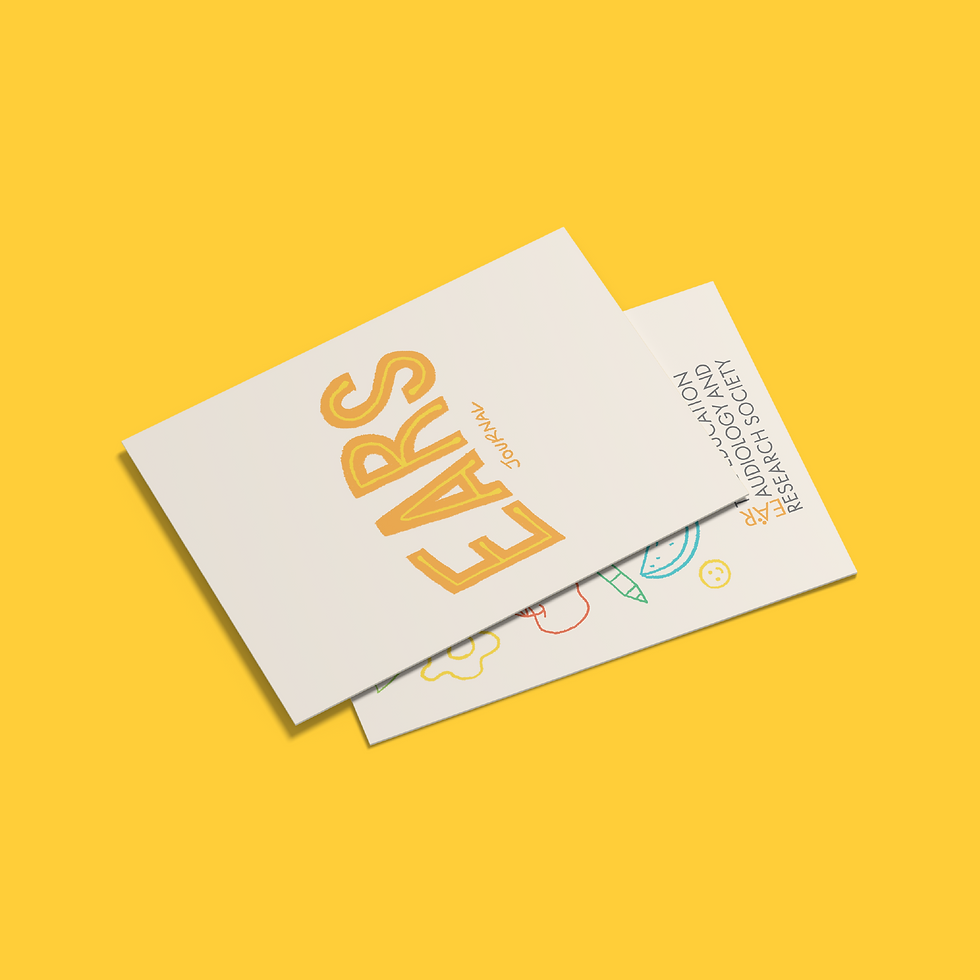Key Improvements:
1. The organization's impact was highlighted to transparently demonstrate how the donations were being used.
2. Using the new design language, a focus was placed on establishing trust and credibility to raise awareness.
Future Suggestions:
It is recommended that a payment platform be integrated into the website to allow for remote donations and that a QR code be placed on all media collateral to redirect the donations page.

E.A.R.S.
The E.A.R. Society, a registered charitable trust founded with the Commonwealth Society for the Deaf (U.K.) and the Darasha Vakharia Education Trust, is affiliated with the Alexander Graham Bell Association (U.S.A.).
As a non-profit, it provides free or low-cost education for children with hearing impairments, using the auditory-verbal approach to help them communicate effectively and thrive in the hearing world.
Challenge:
What started as a capstone project turned into a thesis and capstone due to time restraints at the employer's studio. I researched on the side, enhancing my understanding for more valuable design outputs.
Approach:
To add value, I structured it in a thesis format, ultimately undertaking both a capstone and a thesis to create a comprehensive and impactful project.
My Contribution:
Primary & Secondary Research
Human-centred Design
Ideation
Wireframes & Prototype
UI-UX
Team:
Thesis Mentor
Timeline:
January 2023 - March 2023
Capstone Brief:
To create a functional website, communication strategy, and brand collateral for two of the brand’s stakeholders.
Thesis Brief:
Conduct in-depth research to understand the nitty-gritty of the NGO, point out a problem, and develop a solution.




Research Methodologies & Topics
Secondary Research
Researched existing data, both online and in print.
Observation
Observing the space, stakeholders, and their interactions
Interviews
Interviewing the stakeholders to gain in-depth insights
Participation
Taking an active part in the events and interactions
Interviews & Participation:
Interviewing 10 internal stakeholders provided insights on everyday responsibilities, requirements, obstacles, and goals. Active observation and participation in operations helped to develop a firsthand understanding of operational dynamics and processes.
Competition Analysis:
A comparative analysis of four educational institutions with a similar service structure was conducted. Additionally, their visual identity, color schemes, and communication strategies were examined to ensure a distinctive presence in the industry.
Insights:
There were three distinct users, each dealing with their own unique challenges.

Designing for the Donors
Objective:
Their objective is to donate to a good cause.
Problem:
One of the biggest problems was that the NGO did not have an online presence hence the donors were not aware of the organization.
Solution:
To revamp the visual language to better suit the target audience and to develop print & digital communication collateral.





Designing for the Parents
Objective:
Their objective is to donate to a good cause.
Problem:
One of the biggest problems was that the NGO did not have an online presence hence the donors were not aware of the organization.
Solution:
To revamp the visual language to better suit the target audience and to develop print & digital communication collateral.



Newsletter Elements
Thank-you note for the parents, a note explaining the purpose of the newsletter. Stories of parents and children in similar situations for relatability. A coloring section for the kids.
Spotlight on a few kids and parents to celebrate them and their efforts. Overview of past and upcoming events. A self-reflection section that parents can fill out and save.
